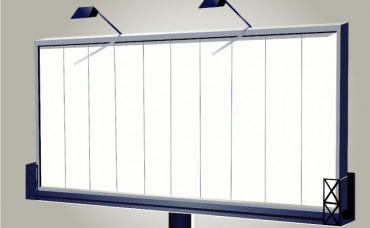6 Tips for Designing a Banner Ad
Banner advertisements today have become the most popular and productive form of ads in the online world. Such ads are prominent and their placement makes them a superb form of marketing which entices users to click on them. All companies use them in one form or another because not only are they affordable but also it becomes easy to measure the number of clicks or impressions gained. The best bit about these ads is the fact that such ads really work wonders in increasing brand awareness and recall.
Now, the thing about banner ads is that brands need to pay extra attention to copy and design. These have to be elegant every time to entice audience and convey the right message. Success of banner ads depend on several other factors including size and placement.. Let’s look at these 6 tips for designing banner ads:
- Pay attention to size and standards
Banner ads need to be designed differently for each site. Google AdWords, one of the biggest servers of banner ads on the web, keeps up with the most popular sizes. “As a rule of thumb,” according to Google, “wider ad sizes tend to outperform their taller counterparts.” Much of this may have to do with placement above the scroll and because it is more comfortable to read from left to right, rather than lots of stacked text. According to Google Adsense the most successful sizes are the:
- 336×280 Large Rectangle
- 300×250 Medium Rectangle
- 728×90 Leaderboard
- 160×600 Wide Skyscraper
- Focus on branding, messaging and action
Banner ads are primarily designed to increase brand awareness and recall so that you get maximum traffic to your website. Keeping this in mind, focus on 3 basic components: your branding, messaging and call to action. Keep your message succinct and simple. Readers should know what you are offering and why they should want it. Then include a logo mark or identification. Then finish the ad framework with a reason to click or more so a strong call-to-action such as, “Buy now”.
- Use enticing copy and imagery
The banner will not allow for elaborate and verbose copy. Keep your phrases short, simple and easy to understand. The copy needs to clearly convey what you do, what you offer and how you can add value. Keep the headlines bold and use colourful text that stands out.
Use visuals that are strong and relevant to break the clutter. If you are an electronics retailer, show an item such as a mobile rather than several items together. Users will only have a few seconds to see what you are trying to say. A strong image next to a strong message and call to action will garner you a good number of clicks.
- Focus on fonts
As a rule of thumb, two typefaces should be enough.
- Go big with the headline. Use something that’s bold, a little unusual or colorful to grab attention from users.
- Stick to a simple sans serif for everything else. You can use two sizes or bolding – one for main text and another for buttons or calls to action. Just make sure it is easy to read.
- Pay attention to branding
Make sure your design is consistent with the branding. Your ad will lead you to the landing page so it should look similar to the actual branding.
- Placement is important
Think about where you want to place your banner ad. If you are using a service such as Google, you might not have a lot of control over placements, but if you are buying direct for specific websites, apps or e-newsletters, you should look at the design of these things before starting on your ad. Placement becomes important as you want your ad to be prominent and visible to lure more number of users.
Check it here for more info on Ad Tech Solutions

